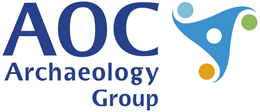Data from a Trial Trenching at Dalehouse Lane, Kenilworth, Warwickshire, 2017-2023 (HS2 Phase One)
High Speed Two Ltd., AOC Archaeology Group, Connect Archaeology, 2025. https://doi.org/10.5284/1126684. How to cite using this DOI
Data copyright © High Speed Two Ltd. unless otherwise stated
This work is licensed under a The Open Government Licence (OGL).
Primary contact
High Speed Two Ltd.
2 Snowhill
Queensway
Birmingham
B4 6GA
United Kingdom
Tel: 08081 434 434
Resource identifiers
- ADS Collection: 5614
- DOI:https://doi.org/10.5284/1126684
- How to cite using this DOI
Introduction

This collection comprises of reports, images, spreadsheets, databases, GIS data and site records from an archaeological trial trenching carried out at Dalehouse Lane, Kenilworth, Warwickshire by Connect Archaeology between 29th May and 5th June 2017.
Project Summary
The Site is situated on the southern side of the Finham Brook valley. A total of 10 trenches were excavated during the evaluation which were planned to address an area of land within the Glasshouse Wood Cutting section of the scheme, required for ecological mitigation works.
Trial trenching was required to determine, as far as reasonably possible, the nature of the archaeological resource within the Site, prior to commencement of ecological mitigation works. The objective of the investigation is to gain information about the archaeological resource in order to support an assessment of its character, extent, knowledge value and ability to contribute to Specific Objectives. The aims of the trial trenching were to: assess the extent and nature of archaeological remains within the survey boundaries; characterise the nature of any archaeological remains within the survey boundaries; assess the significance of any archaeological remains within the survey boundaries; assess the change to the significance of the identified heritage assets as a result of the detailed design; suggest measures, if appropriate and feasible, for further archaeological investigation to mitigate identified significant impacts; and contribute to the delivery of GWSI: HERDS Specific Objectives.
The specific objectives of the trial trenching were:
- Identifying settlement location and developing models for settlement patterns for the Mesolithic, Neolithic and Early Bronze Age;
- Does a lack of visibility of Neolithic and Bronze Age monuments reflect genuine area distinctiveness, or is this due to variation in geology or investigative techniques?
- Assess the evidence for regional and cultural distinctiveness along the length of the route in the Romano-British period, with particular regard to the different settlement types encountered along the route;
- Identify evidence for late Roman occupation and attempt to identify any continuity in settlement patterns between the end of the Romano-British period and the Early Medieval period;
- Investigate the development of water mills from the Anglo Saxon through to the modern period. How did the technology of milling change, and what implications has this for farming practice?
- Undertake research and investigation into medieval manorial complexes. What was their origin, development and impact on the landscape?;
- How were medieval and later woodlands managed and exploited and what evidence do they preserve for earlier land use?
- Identify patterns of change within medieval rural settlement from the 11th to mid-14th century.
Re-Use Value Statement
The evaluation met its primary objective; to determine, as far as reasonably possible, the nature of the archaeological resource within the Site, prior to commencement of ecological mitigation works. No archaeological features, other than field drains, were present indicating the Site has low potential for the presence of sub-surface archaeological remains. Given the historic use of the Site for arable cultivation, it is likely that any archaeological remains have been adversely affected by this activity; should they have been present to begin with.
As no archaeological features were present within the trial trenches at Dalehouse Lane there is no potential for further archaeological work at this Site. There are no results of consequence which contribute to the wider historical context of the Kenilworth area. Due to the lack of archaeological features present at this Site there will be no recommendation for formal publication of the results from this Site.







